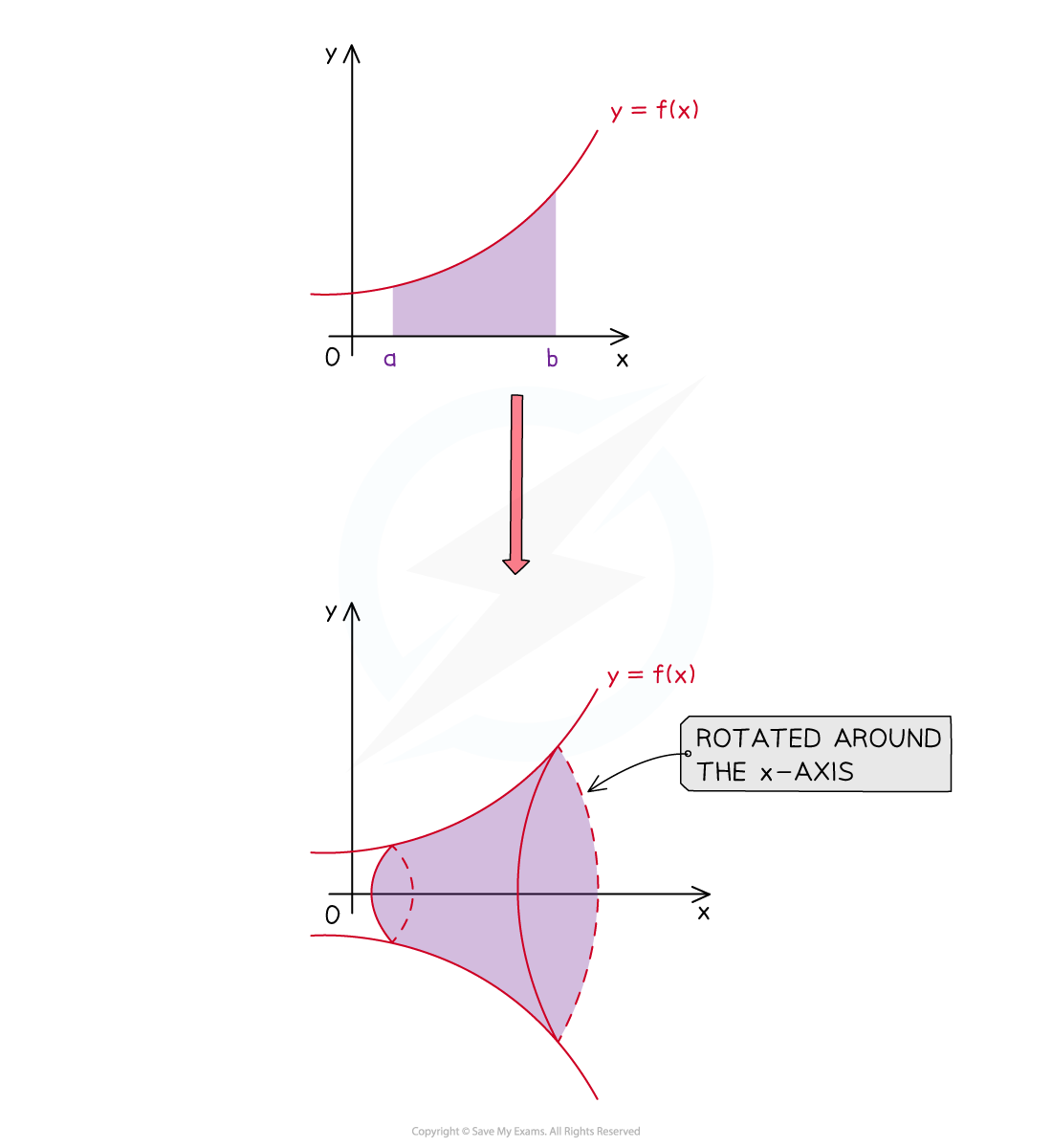Disc Method Around the x-Axis (College Board AP® Calculus AB): Study Guide
Volume with disc method revolving around the x-axis
What is a volume of revolution around the x-axis?
A solid of revolution is formed when an area bounded by a function
(and other boundary equations) is rotatedradians
around the
-axis
The volume of revolution is the volume of this solid

Be careful – the ’front’ and ‘back’ of this solid are flat
they were created from straight (vertical) lines
3D sketches can be misleading
How can I use the disc method to calculate a volume of revolution around the x-axis?
For a continuous function
, if the region bounded by
the curve
and the
-axis
between
and
is rotated
radians
around the
-axis, then the volume of revolution is
Note that
is a function of
If
and
are not stated in a question, these boundaries could involve
the
-axis (
)
and/or an
-intercept of
This method of finding volumes of revolution uses the idea of a definite integral as calculating an accumulation of change
It is a special case of 'finding volumes from areas of known cross-sections'
is the volume of a disc with
circular cross section of radius
and length
is the limit of this volume element as
The integral
sums up all these infinitesimal volume elements between
and
Examiner Tips and Tricks
If the given function involves a square root, the problem may seem daunting
But the square root will be 'squared away' when using the Volume of Revolution formula
If a diagram is not provided, sketching the curve, limits, etc. can really help
A graphing calculator can help with this
Worked Example
Let be the region enclosed by the graph of
, the
- and
-axes, and the vertical line
, as shown in the figure below.

Find the volume of the solid generated when is rotated about the
-axis. Give your answer as an exact value.
Answer:
Use
The question doesn't specify units, so the units of volume will be
33π units3

Unlock more, it's free!
Did this page help you?